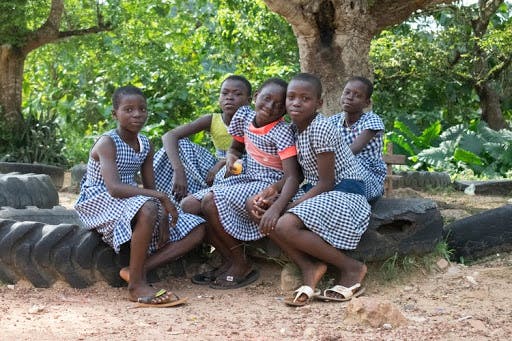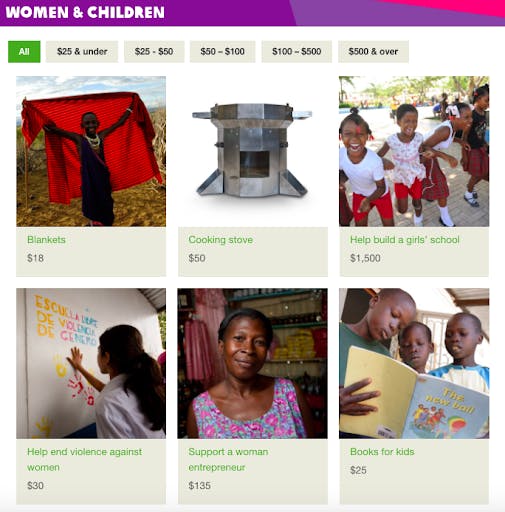Introduction
In the last 30 years, NGOs and international organizations have done tremendous work on eradicating poverty worldwide. In 2018, the World Bank reported that over 1.1 billion people have been pulled out of extreme poverty since the year 1990.
However, there’s still a long way to go. World Data Lab statistics are alarming – as of 2020, there are over 600 million people still living under the poverty line, i.e. for less than $1.90 per day. Children under the age of 14 make as much as 44% of this group – i.e. 266 million.
Unfortunately, as the world is battling the COVID-19 pandemic, the initial goal of eradicating extreme poverty by the year 2030 is now seriously endangered.
What do governments and organizations need to do to save children? And how can you help?
In the following post, we discuss the root causes of children poverty and how organizations are currently tackling the challenge. We also share 3 extremely simple ways in which you can contribute to making children poverty a distant memory.
Children in poverty – causes and effects
There are several factors that make it impossible for children to escape poverty. The most important being:
#1. Lack of access to education
Like in other parts of the world, education is crucial for climbing the social ladder. However, while in the West we think of education as a way of avoiding unemployment, it’s not necessarily the case in poverty-stricken regions. Many people living under the poverty line are, in fact, employed (though on terrible financial terms or in inhumane conditions). Access to education creates potential career paths that could help children and their future families escape poverty.
#2. Lack of access to healthcare
In the poorest countries, children are dying or suffering from life-long consequences of illnesses that are easily preventable in developed regions. These include diseases that are treatable through antibiotics, prevented by vaccination, or avoided via better sanitary standards or mosquito nets. For instance, uncontrolled toilet waste disposal leads to the spread of diseases like cholera or Ebola.

#3. Malnutrition
Malnutrition takes on various forms – from being underweight and stunting (a lower-than-average height for a given age) to starvation.
According to the World Health Organization, “around 45% of deaths of children under 5 years are linked to undernutrition”.
Paradoxically, these very same countries also witness a rise in child obesity due to vitamin and mineral-deprived diet.
All these types of malnutrition result in one terrible consequence – the incapability of reaching one’s physical and cognitive potential.
All of the above points lead to...
#4. Lack of perspectives
As children grow up in harsh conditions, they can’t contribute economically, socially, and politically to the welfare of impoverished citizens when they come of age.
The result?
A vicious cycle of poverty, passed on from one generation to the next.
Parents, who were deprived of the opportunity to leave extreme living conditions behind, are incapable of saving their children from experiencing the same fate.
And if the parents are incapable of helping their sons and daughters, it’s up to governments to secure a better future for its growing citizens. However, most of them can’t do it alone.
Efforts that need to be taken on a global scale
NGOs and international organizations are working around the clock, with a special emphasis on:
Prioritizing social & healthcare programs
Organizations need to work closely with governments.
For instance, UNICEF has set a goal of single-handedly contributing to halving children poverty by 2030. It’s currently working alongside governments and the World Bank to introduce medical, educational, and social programs.

Other organizations worth mentioning include Give Directly (that lets donors send money directly to people in need), and two healthcare initiatives – Against Malaria Foundation and Schistosomiasis Control Initiative.
Limiting bureaucracy
Some countries still obstruct the functioning of charities and aid programs. These limitations need to be relieved through cooperation with global organizations like the WHO or the World Bank.
Bureaucracy also means that programs might not be adequately promoted in the poorest regions, making it hard to reach those in need. In fact, it was due to bureaucracy and vague administrative divisions in countries like Nigeria, that Bill & Melinda Gates Foundation was incapable of eradicating polio through their vaccination campaigns.
Programs for adults – so that they can move out of poverty
As mentioned earlier, when families have the ability to move out of poverty, their children can finally gain access to better healthcare, nutrition, and education. The numbers speak for themselves.
As reported by World Vision, “since 1990, the number of children dying — mostly from preventable causes such as poverty, hunger, and disease — is less than half of what it was, dropping from more than 35,000 a day to under 15,000.” And so, creating programs for parents or young adults can finally stop this tragic domino effect.
Now, let’s see how individuals like you and I can also contribute to this cause.
How can you help? Here are 3 simple ways.
Consider setting a regular donation
You know how they say, “little by little does the trick”?
Consider choosing a verified charity and set a regular donation. While the donation can be very modest, over the years it might lead to saving dozens of lives. For instance, it costs the Against Malaria Foundation only about $4.5 to purchase an anti-mosquito net for a household in need, and only $0.66 to deworm a sick child through the Evidence Action program.
With programs like Give Directly, you can also send your donations directly to people in poverty, skipping all the bureaucracy.
We also recommend that you check if you can donate part of your yearly income tax. Some countries (for example, Poland and the United Kingdom via its Gift Aid program) allow citizens to donate part of their tax to an NGO of their choice.
Buy charitable gifts for family & friends
Looking for a meaningful birthday or wedding gift? Consider buying a voucher that saves children's lives! Organizations like Oxfam and Against Malaria let you buy gift cards for vaccines, baby formula, respirators, and others.

Last, but not least...
Install the Altruisto browser extension
At Altruisto, we’ve developed a free browser extension that lets you donate money to charities addressing issues of global poverty as you shop, at no additional cost to you!
How does it work? It’s simple. All you need to do is install the plugin, and when you shop through our partners’ websites (including Aliexpress, Barnes & Noble, Booking.com, eBay, Etsy, and Microsoft), a portion of the money you pay will go to underfunded charities.
We work with evidence-backed, underfunded organizations like Against Malaria Foundation, SCI Foundation, and Give Directly.
Help us prevent over 500,000 deaths yearly
Eliminating extreme poverty by 2030 is an ambitious goal – especially now, as the World Bank and other organizations have to additionally face a new adversary – the Coronavirus pandemic. Therefore, it’s crucial that organizations, governments, and individuals all join forces!
Support us in the battle – together, we can make a difference for so many lives. Also, help us spread the word about Altruisto by sharing this post or our homepage in your network!